
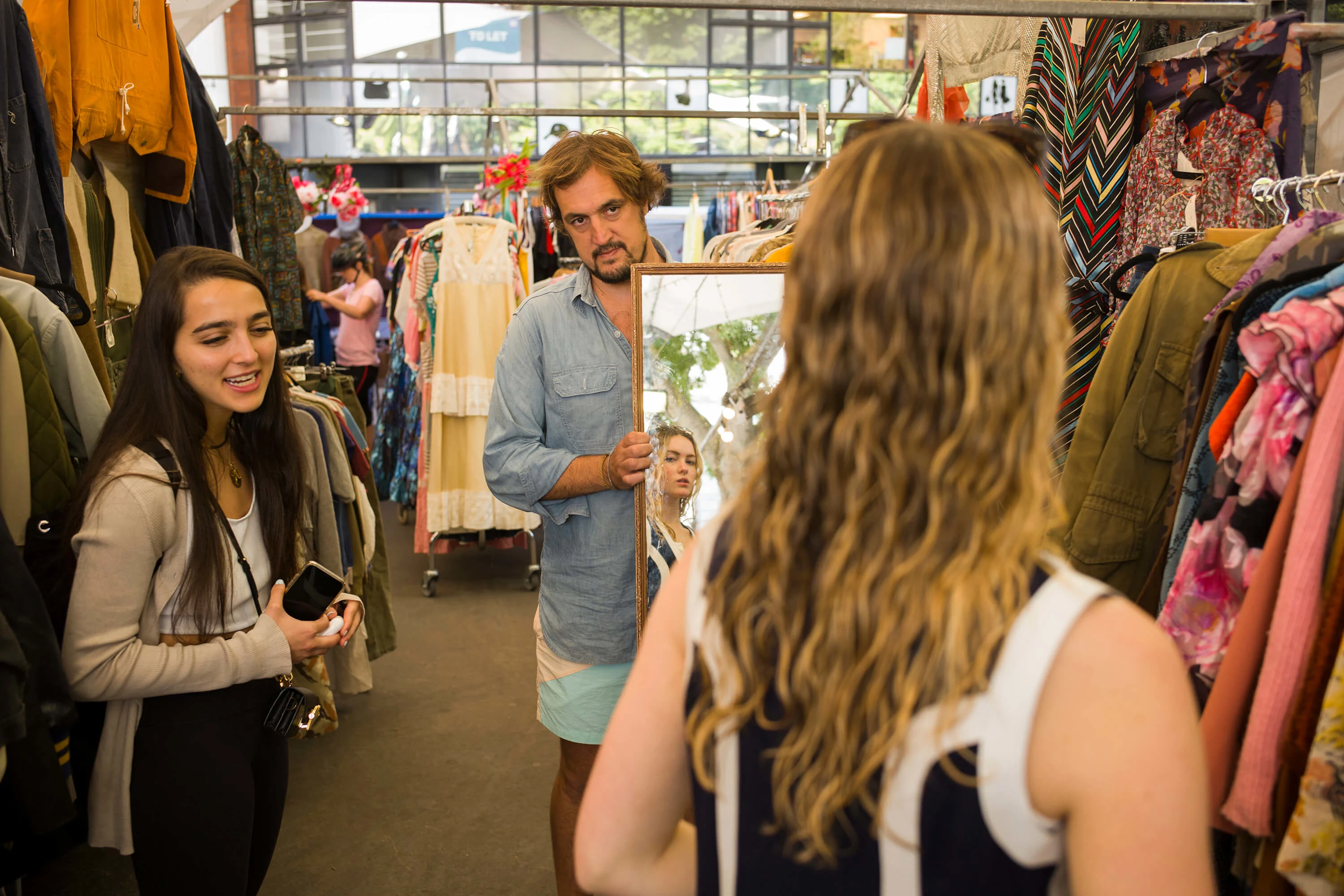
From the east end of London, husband and wife Enric and Estefi Jorba run a vintage clothing company that’s sought out by stylists, celebrities and major fashion labels. But Silk & Rope is old school – it doesn’t even have a website. Ana Santi talks fashion, freedom and how to avoid being naked when people want to buy the clothes off your back.
Photography by Matt Stuart.
In the early morning light, as Portobello market traders shift rusty clothes rails and sweet smoke fills the air, hand-embroidered dresses and prized Edwardian tulle blouses are being hung in prime position. Enric Jorba has been here since 6am. “That’s not early, 3am is!” he laughs. Silk & Rope – a vintage fashion duo, formed with his wife Estefania Vidal – often attend appointments in the dark.
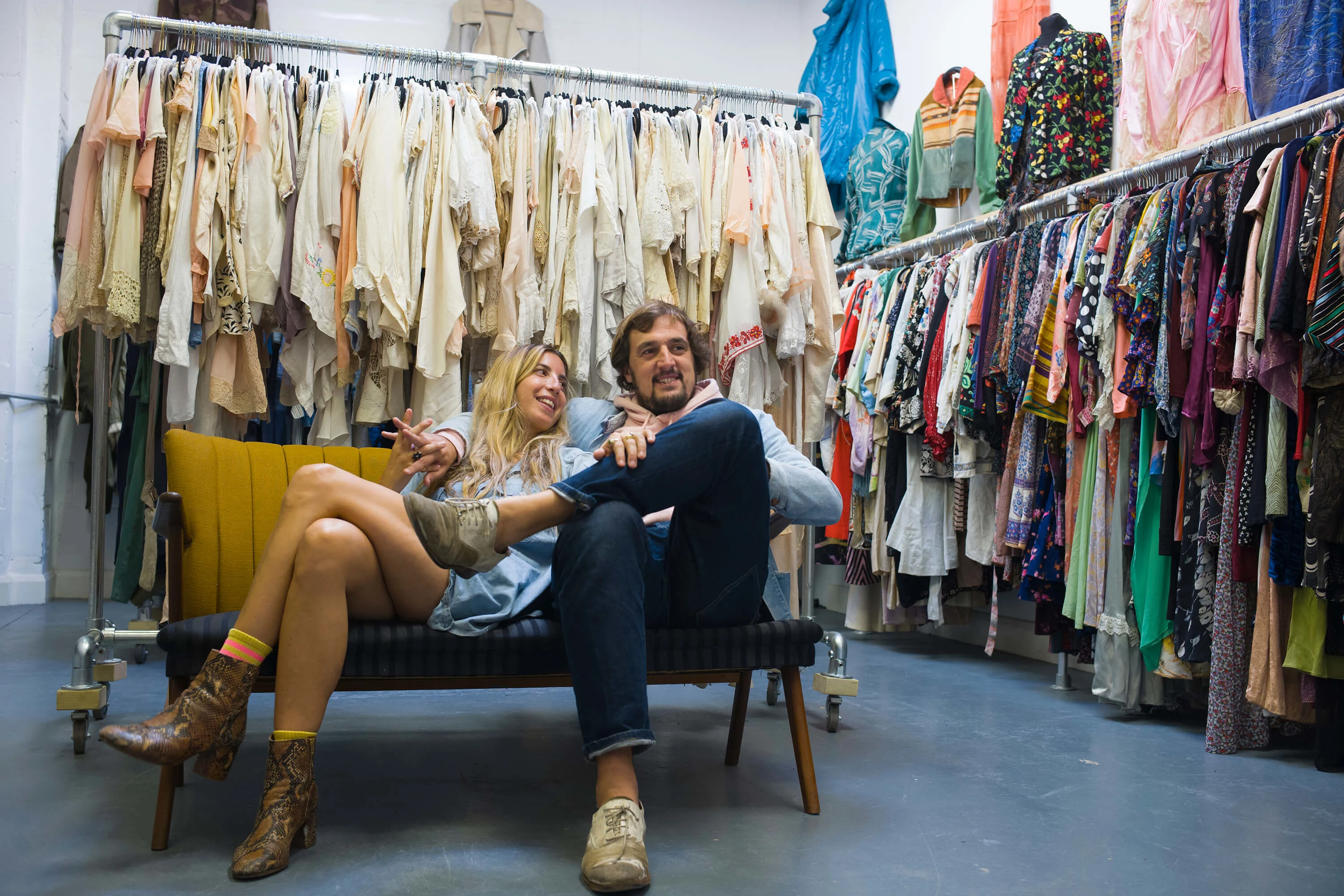
Their life is a world away from mainstream fashion, rooted in personal, face-to-face relationships for the exchange of exquisite, vintage clothing. There is no website, only Instagram, and there’s not even a computer at their archive in east London, a floor-to-ceiling treasure trove where the collection is housed.
“I take ages to reply to emails,” Estefi moans over FaceTime (she’s skipping the markets for now to be home with their three-month-old daughter Lulu, a sister to Coco). But it doesn’t matter; when Florence Welch wants an outfit, her stylist Aldene Johnson picks up the phone.

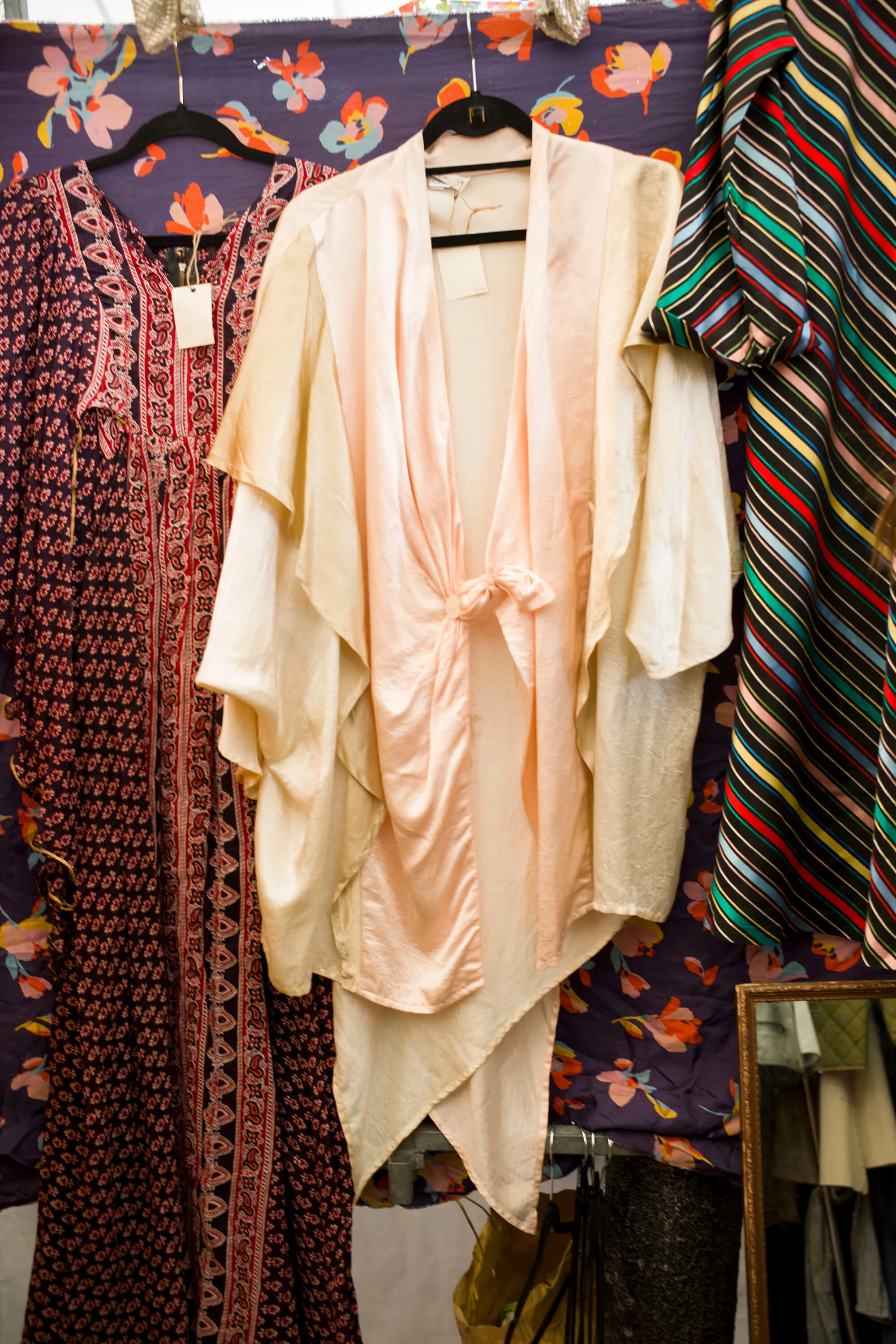
You’re buying a little piece of history.
It might appear quaint and old-school on the surface. But, it embraces the values their industry was once built on – beauty, individuality and self-expression. Eric and Estefi will jump in a van to take a US road trip, on the hunt for hand-embroidered silk kimonos (Estefi’s favorites) and military jackets (Enric’s). These rare finds are either sold or hired by designers in markets – normally Portobello or Spitalfields in east London – or at the couple’s archive, where most business is done.
It’s a world of secrets, too, of keeping your cards close to your chest. Ask Enric where he found the 1920s floral print blouse and he’ll reply, roaring with laughter, “Somewhere between Barcelona and London!” He gives away a little more about the origins of a fringed, military jacket adorned with badges from the late 1960s to early 1970s, which you can buy for £650 or rent for £100 per week. “That was on a road trip from New York to LA, in an antique shop where this guy was selling old coins and guns,” Enric recalls. “You’re buying a little piece of history. In each badge, there’s a story to tell.”

Enric and Estefi were childhood sweethearts. They went to the same school in Barcelona, but only afterwards, when Estefi was 19 and Enric 20, did the two properly meet. “I went to a friend’s house for lunch and he was there, and I was like, ‘oh, hello!’ But he remembers me from when I was seven!” Estefi says. “There was a party, and musical chairs apparently, and he came up to me and said, ‘Can I play with you?’ And I said no!”
Before they moved to London – they’ve lived in the UK for 11 years now – Enric worked in advertising and Estefi in television, but both shared a love of clothes, “back in the day when we wore our Adidas jackets!” Estefi laughs.

Then one Sunday in Brick Lane, they spotted their neighbor selling clothes in a market. “Our English wasn’t very good at the time, and we were doing whatever jobs we could, but then I thought, we have a lot of clothes… the next weekend, we started selling stuff, and the weekend after we sold out. So we had to start buying.”
One market became two, their network grew, they learned on the job. “The big change came when we realized the people we were selling to were stylists and fashion designers,” Estefi remembers. “So we started buying more interesting pieces, traveling to the US and Europe. Enric became an expert in military designs, I love embroidery and lace. There we were, these kids from Barcelona selling fur coats to these women!”
“Our relationships are with people, with individuals,” Enric adds. “You’re selling to someone who likes you, who likes your stuff, who you might go out for drinks with. One day he might be at Céline, the next at McQueen. And people often buy into a style, rather than the individual clothes.”
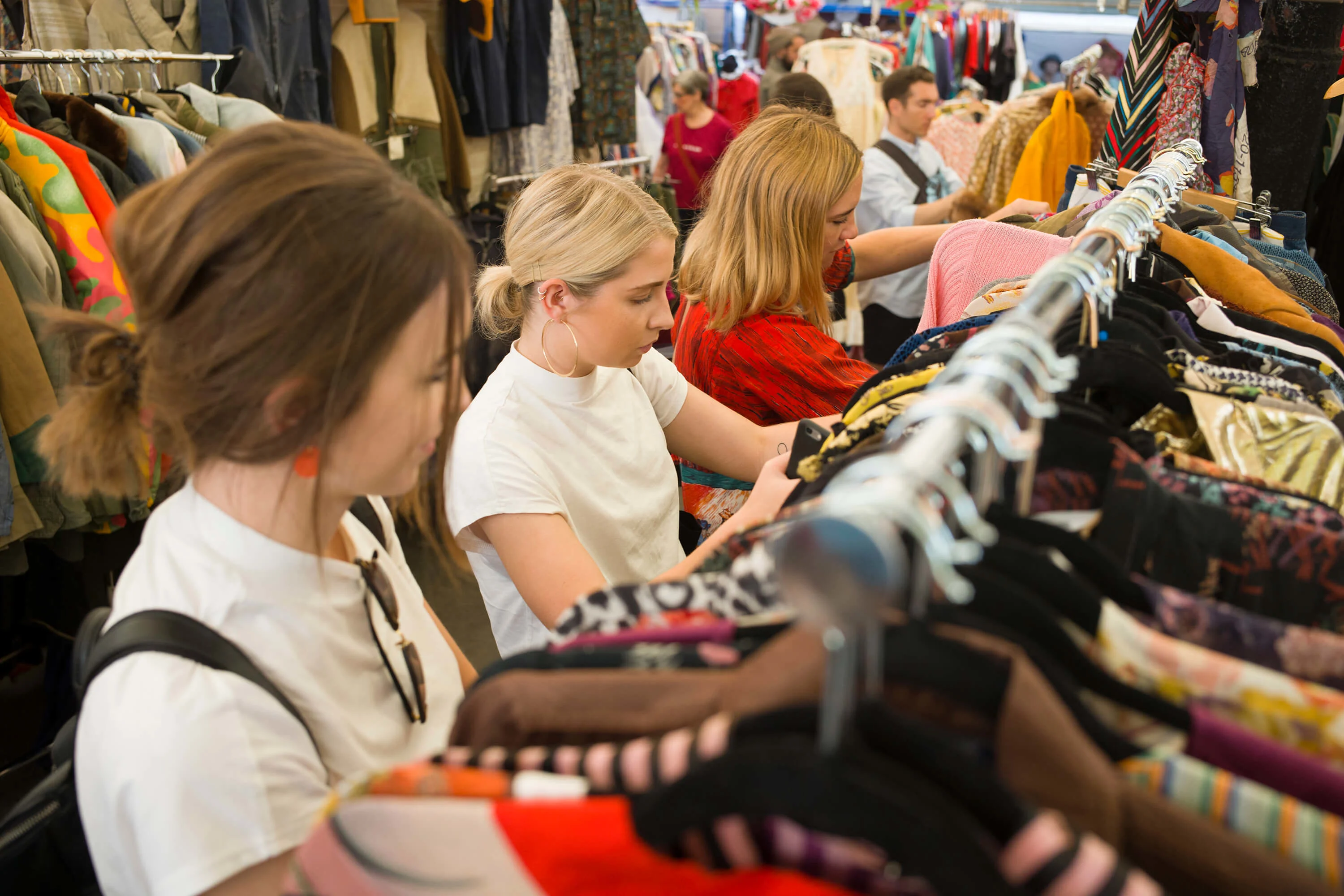
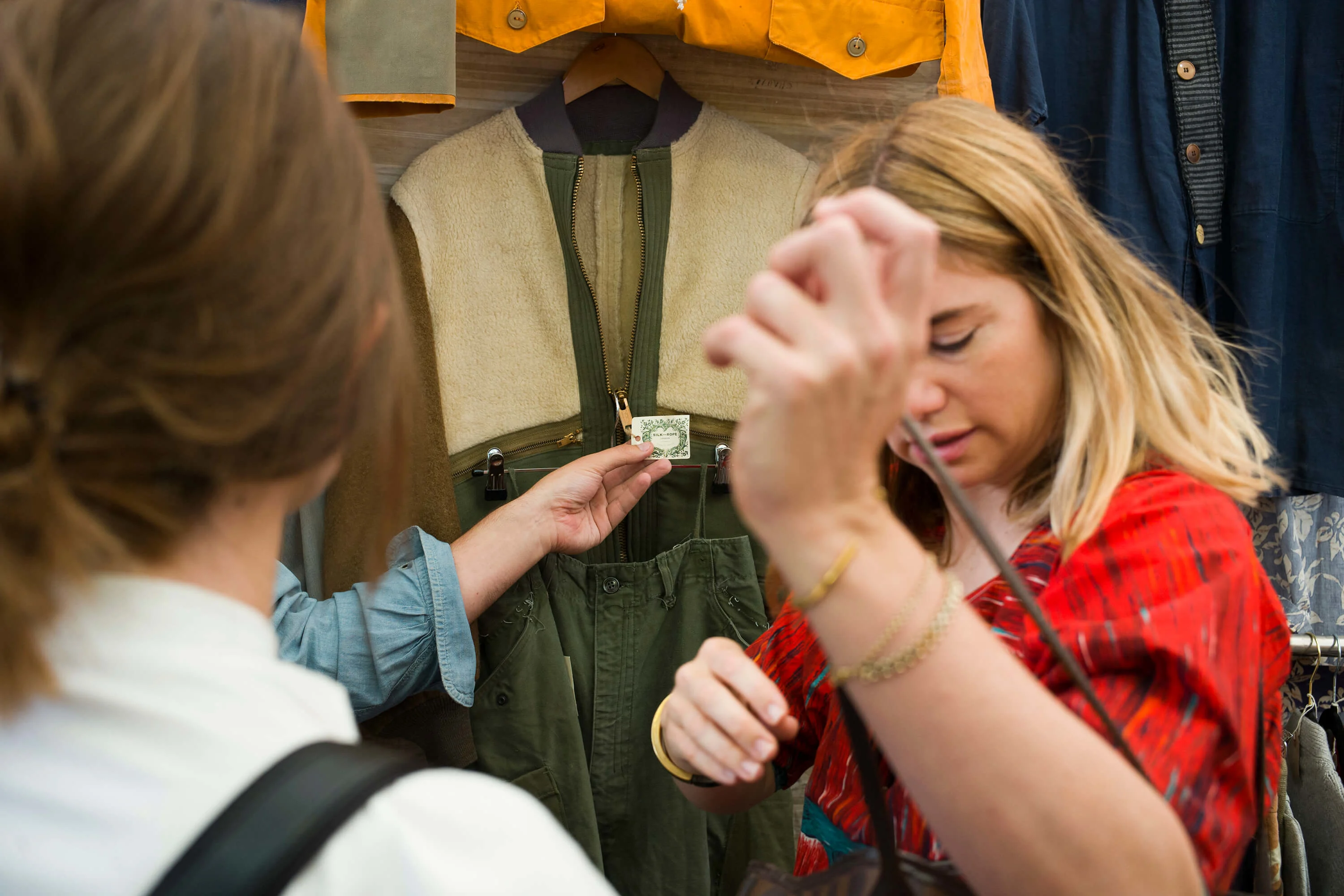
Look how quickly she rifles through the rails. She’s not looking at the detail.
Enric recalls when Estefi was stopped in the street by a group of strangers who turned out to be fashion buyers. They wanted her coat – the one she was wearing – which she’d purchased just minutes before. “She sold it for $2,000! Then, when she’d taken it off, they wanted her shirt too! She was practically naked. Luckily, we were carrying about 60 pieces of clothing with us.”
“That happens all the time,” Estefi laughs. “I remember this embroidered kimono I was wearing in LA. It was really faded, really unusual, and everyone at our appointments wanted it. Eventually, I ended up selling it. And it paid for the whole trip! At the end of the day, it’s just clothes.”
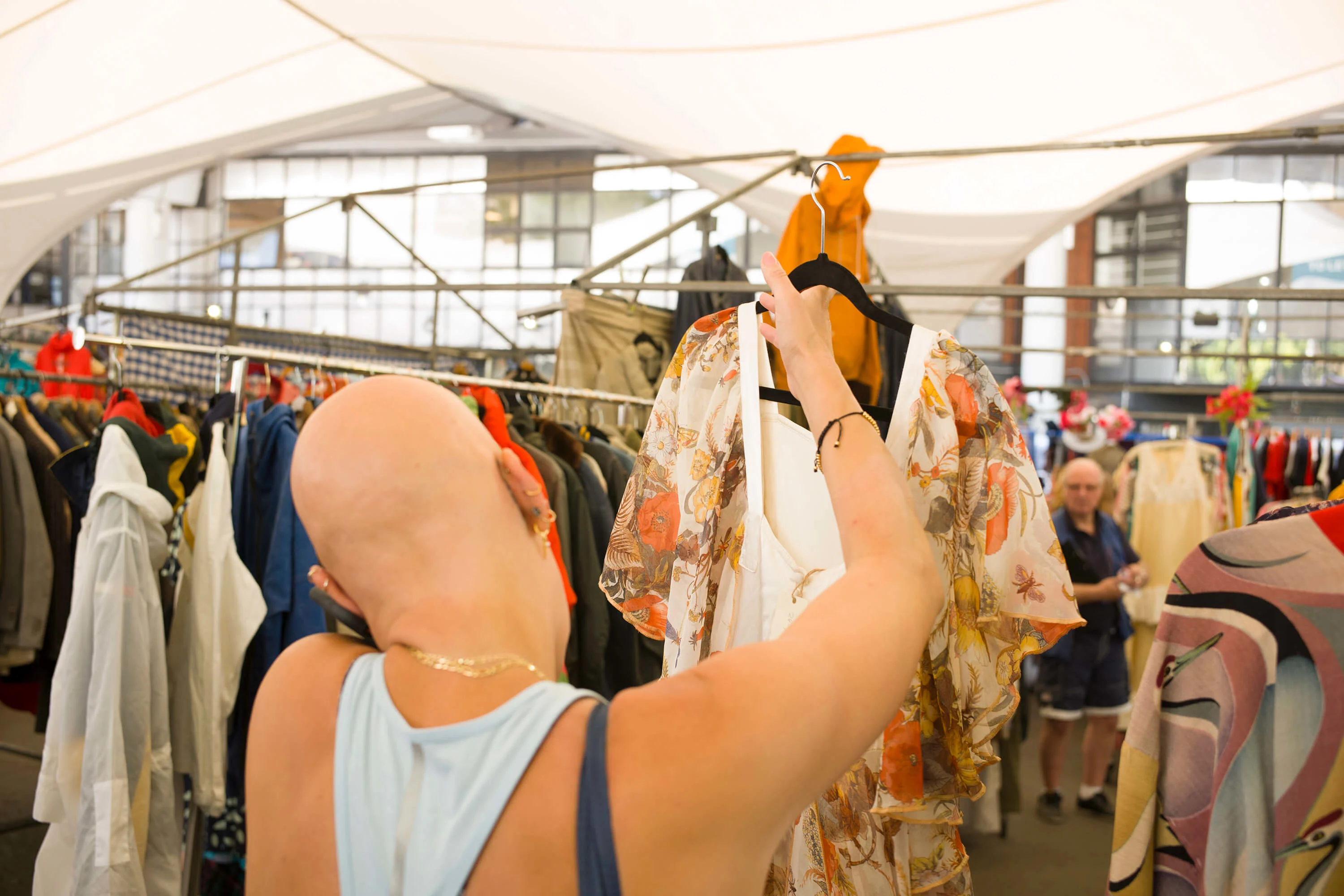
This from a woman who, by her own admission, prefers buying to selling, which can cause disagreements between the couple. Enric is the more practical, commercial one, who judges a piece of clothing based on how a designer might use it. “But I say, let’s buy this! And this! And that one!” Estefi says. And who’s right? “We both are. I remember finding another kimono, it was silk and gorgeous, but really expensive. Enric didn’t think we should buy it, but I persuaded him. A week later, Aldene bought it for Florence.”
Back on the market floor, Enric watches potential customers – or not – from a distance. “Look how quickly she rifles through the rails. She’s not looking at the detail,” he says, of one browser. Sure enough, she doesn’t buy and leaves within minutes. “Take this Sergio Tacchini jacket,” he continues. “It isn’t for everyone. What I like is that it’s inspired by World War Two camouflage, but they’ve taken the salamander camo and tried to re-invent it, to make it more Italian with the bright colors.”
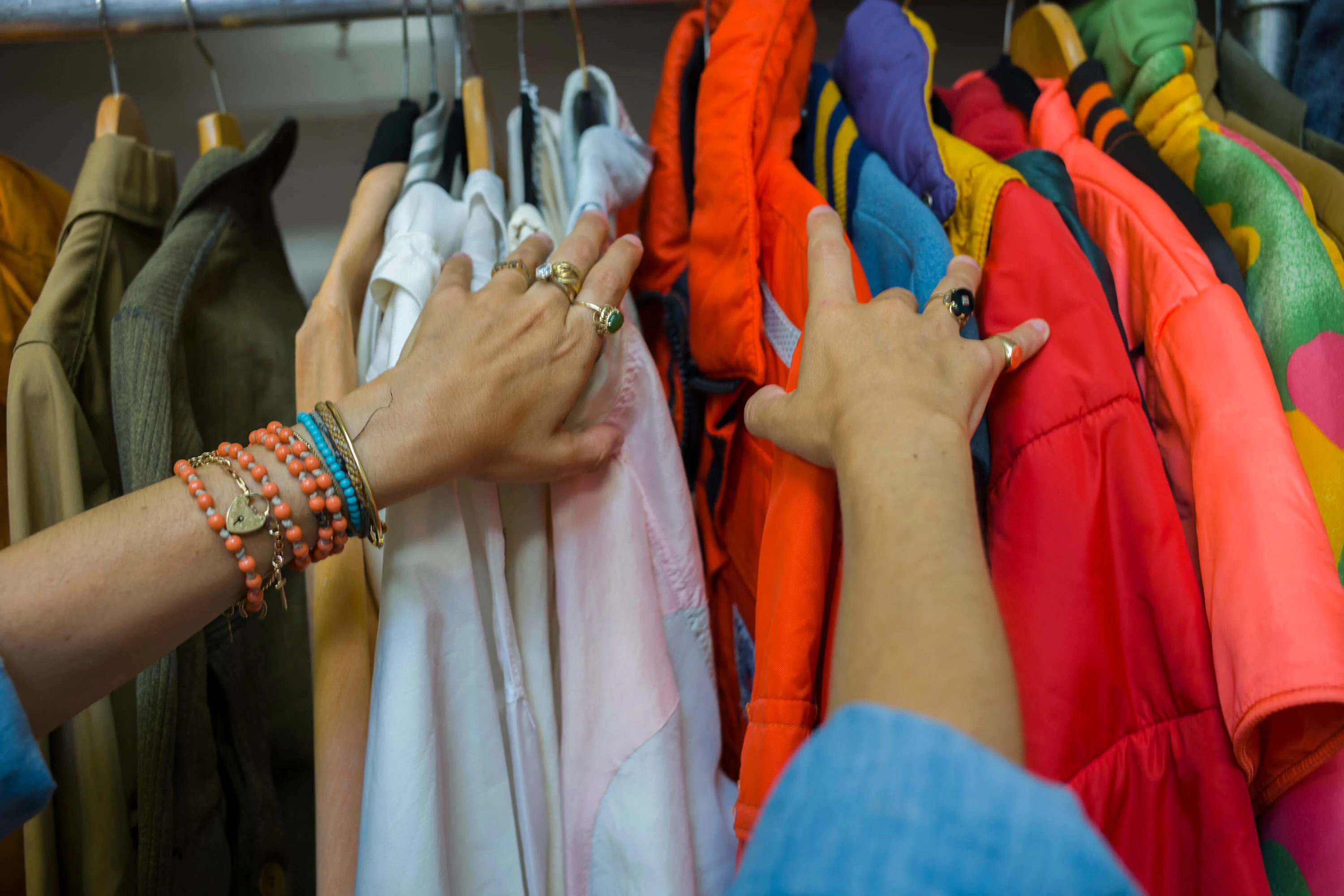

If there’s a science behind vintage fashion buying, then the formula is a mystery. Silk & Rope’s first visitor is the legendary vintage buyer at Ralph Lauren, Doug Bihlmaier. At 8am, he beats the other buyers by more than an hour. “This is amazing,” he says quietly. “Enric, what is this?”
“A bohemian smock.”
Doug turns to me, “They have a great eye.” And then he leaves.
“He’ll look around, have some breakfast, then come back,” Enric explains. An hour later, buyers from a French fashion house arrive and pick up workwear and military pieces.

“We forgot about proper careers,” Estefi laughs, as she contemplates her life now, thinking back to the early days in London. “It was a good lifestyle, traveling in our van, so much freedom. And each time it gets better. Coco’s been to the Ralph Lauren office in New York, to Morocco, we’ve brought them to the market at 6am. It’s good that they grow up with it. Having children has changed it for the better.
“Before, it was all a blur, with kids, everything's sharper. In focus. We have breakfast all together in the garden if it’s sunny. Then we might go for a swim. Or have some brunch. And it’s a Tuesday! In this job, you never know what’s going to happen but we couldn’t go back to normal careers, so in that sense, we’re fucked! But you can’t put a price on our freedom.”

